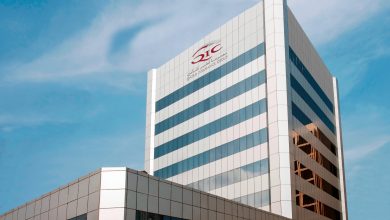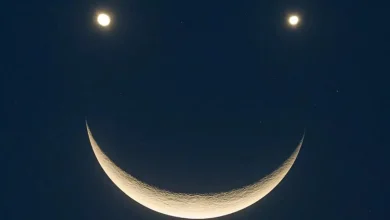
Requirements for participation in the National Sports Day: Detailed Report
تقرير مفصل: اشتراطات المشاركة في اليوم الرياضي للدولة
WGOQatar
Doha: The Ministry of Culture and Sports and The National Sports Day Committee announced public health measures to protect the health of participants, spectators, organizing committee members, staff and supporting personnel by reducing the risk of Covid-19 transmission before, during and after the event set by Ministry of Public Health (MoPH).
SPORTS DAY TRAINING AND VENUE PREPARATION:
• All activities, training and preparation before and during the event must be conducted entirely in outdoor settings. Activities in indoor settings are entirely prohibited.
• Participants will be arriving at the training/ preparation venues for training/participating in the events in buses or private vehicles. The players should be transported in small groups to avoid spreading the infection while maintaining 1.5 meters distance while seated on buses (maximum of 25 occupants in 50 passenger capacity bus). As for private cars, no more than 4 people are allowed in each car including the driver. All occupants should be wearing face masks during transit.
• Once the participants reach the venue, close interaction with other people should be avoided and a safe distance must be maintained at all times.
• It is recommended to avoid shaking hands, hugging or kissing at all times.
• The safe distance of at least 1.5 meters must be strictly maintained during training, preparations and during the event itself. Participants are advised, while talking to other participants /staff/event organizers to maintain a distance of 1.5 meters while avoiding face-toface interactions.
• Local Organizing Committee (LOC) should assign staff at training/participation venues to check all participants’ temperatures each day. Additional staff/volunteers should be assigned to reinforce compliance with safe distance and masks requirements and other health measures.
• Good hygiene also includes ensuring that all participants are not to share clothing, towels, soap or other personal items and that they use their own drinking bottles and not share them with others. They should wash hands often with soap and water or use an alcohol-based hand sanitizer as alternative. Hand sanitizer stations should be available all over the event venues and on buses.
• All participants and spectators must be reminded to adhere to health measures, especially physical distancing and wearing face masks. Participants’ use of common showers and changing rooms should be avoided at all venues.
• All participants must download the “Ehteraz” app. Only those who have a green status are allowed to enter.
• Ensure that all used spaces and surfaces are cleaned and disinfected on regular basis.
• Provide visual reminders and health awareness materials such as banners or posters.
• Provide an isolation area for anyone showing COVID-19 symptoms, and notify health officials.
QUARANTINE AT THE HOTEL:
• All international participants or guests, if applicable, are required to enter into a hotel quarantine as per Qatar’s specific regulation and quarantine protocol in force at the time.
• Guests might be required to undergo Covid-19 testing upon arrival and 6 days after arrival.
• Upon arrival at the hotel, participants/guests will undergo thermal scanning and might be interviewed and screened for possible Covid-19 symptoms and signs. If the participant is found to be symptomatic (with fever, cough, flu-like symptoms… etc.) or showing other symptoms and signs he/she will be set for further assessment by medical staff at the nearest healthcare facility/Emergency department and could be referred to a designated hospital for further assessment and management accordingly.
COVID-19 TESTING:
• All participants, as appropriate, should submit a certificate of clearance of Covid-19 (Negative RT-PCR or equivalent test) performed 72 hours prior to participation in the event.
• RT-PCR or equivalent testing will be conducted using a mid-turbinate nasal swab at Hamad Medical Corporation (HMC) or the National Reference Lab.
• Participants who test positive for Covid-19 will not allowed to participate unless they have completely recovered i.e. after the lapse of 14 days of diagnosis and at least 5 days of disappearance of any Covid-19 symptoms and signs, or the lapse of 10 days of a positive PCR
test in an asymptomatic individual.
• Refusal of swabbing for PCR or equivalent testing will result in dismissal from participation in
the event training and the event itself.
TRANSPORTATION:
• In the case of participants’ arrival on a bus, they should be transported in small groups while maintaining the 1.5 meters distance to avoid spreading infection (maximum of 25 occupants in 50 passenger capacity bus). If participants arriving in private cars, the maximum number of
occupants is 4 as per the MOPH guideline.
• The participants will be asked to wear masks throughout the entire period while being in transport vehicles, and other times except during exercise.
CATERING:
• Meals should be served in accordance with the Ministry of Public Health (MOPH) guidance for catering during Exhibitions/Conferences/Cultural Events. Only ready-made or prepackaged meals are allowed during preparations, training and during the actual event with a minimum of 2 meters distance between tables in all directions with not more than 4 people seated on same table and with 1.5 meter distance between people if on the same table.
• Food outlets and concessions at venue are restricted to ready-made take-away in disposable packaging. Prepackaged, grab and go food meals and drinks to shorten waiting time for customers are preferred. Dining in outdoor settings is preferred over indoor settings.
• Queues for obtaining meals must comply with the minimum of 1.5m physical distancing precautions – mark floors to ensure compliance and provide staff or volunteers to ensure public compliance. No buffet food is to be served in any venue.
SPORT EVENTS:
• All participants must maintain a minimum of 1.5 meters safe distance during the parade and during the training for the parade.
• Masks are mandatory and should be worn all the time except during exercise.
• No cheering, live choir or live group singing is allowed during training or at the events.
• Individual protection packages must be provided for participants containing:
• Small personal packages of disposable tissues and plastic bags for tissue disposal.
• Several medical masks to wear.
• Small packages of alcohol-based hand wipes or hand sanitizer.
OTHER PUBLIC HEALTH MEASURES:
• Participants need to guarantee physical distancing of 1.5 meters preventing face to face gatherings and avoiding handshakes, hugs, kissing, and general person-to-person contact.When seated, people should maintain the required safe distance at any time anywhere during the event.
• Provide trash cans with lids to dispose of used tissues on all buses and in all facilities and in areas where the public will be seated.
• Anyone participating in the event who is feeling ill should not come to the venues and should be advised to visit the nearest health center.
• Pre-event meetings are strongly recommended to be conducted online. If physical meetings are deemed inevitable, they should be done preferably in outdoor settings while maintaining the safe distance of 1.5 meters and wearing masks for all during the entire meeting period. If indoor meeting is required, the meeting should not include more than 15 participants in the meeting at a time while wearing masks. Social gatherings are strictly prohibited during the event.
• Ensure good hygiene signage across all venues, preparation rooms, toilets, and training facilities, etc.
• It is preferable to have a medical post (field clinic and paramedics) and designated personnel on site to help assess urgent cases if needed.
• Team staff and volunteer leads should ensure that their teams and volunteers are briefed on the protocols for suspected and confirmed Covid-19 cases, on infection prevention and control measures and on where to find or seek more information.
AUDIENCE AND SPECTATORS:
Spectators will be allowed to attend while maintaining all the required health measures, including masks for all and physical distance of at least 1.5 meters from other spectators in all directions, as well as the following:
• Spectator capacity will not exceed 30% of total outdoor seating capacity while maintaining a minimum of 1.5 m physical distance in all directions.
• Family groups of the same household can sit together either on the stands or in the open, but ith the same minimum of 1.5m distance from other families in all directions.
• Check EHTERAZ App is downloaded, check that the status is green to allow entry.
• Thermal screening must be conducted for employees, athletes, and the public before entering the stands area or rally place, entry will be prohibited for those with temperature above 37.8 degrees.
• Gates are to open early to avoid crowding at the entrances.
• Avoid crowding during spectators entry and exit areas maintaining a safe distance between
people all the time.
• All spectators must wear face masks all the time.
• Makeshift sale outlets at venue inside and outside the seating areas are allowed if necessary, according to MOPH guidelines for Restaurants..
• Smoking is not allowed on the stands and in public places.
• Designated smoking rooms/areas should be approved by the relevant MOPH department.
• Vulnerable and high-risk groups including those over 60, people with chronic illnesses and people with disabilities, should be discouraged from attending the event for their own safety.
• Make special considerations for vulnerable groups if attendance is inevitable, keep vulnerable groups safe and protected all the time with strict adherence to public health measures.
• No spitting, no cheering, no live choir and no live singing by spectators as this can spread the virus.
• The health authorities might decide, any time based on the level of spread of infection in the community, to hold the event behind closed doors (no spectators) or even recommend postponing the event if necessary.
For more general health and prevention information, inquiries can be directed to the Ministry of Public Health, including inquiries and compliance issues relating to the above-mentioned requirements.
WGOQatar
الدوحة: أعلنت لجنة اليوم الرياضي للدولة – من خلال الموقع الإلكتروني لوزارة الثقافة والرياضة – عن الاشتراطات الخاصة بالأنشطة والفعاليات الرياضية لليوم الرياضي لعام 2021، وذلك بعد التنسيق مع وزارة الصحة العامة. تم اعتماد وثيقة بروتوكول الرعاية الصحية وتدابير الصحة العامة، والتي تهدف لتسهيل إقامة الفعاليات الرياضية الآمنة وسط جائحة كوفيد 19.
أماكن التدريب والتحضير لليوم الرياضي:
- يجب أن تتم جميع الأنشطة قبل اليوم الرياضي أثناء التدريب والإعداد، وخلال الحدث نفسه بالكامل في أماكن خارجية مفتوحة.
- الأنشطة في الأماكن المغلقة محظورة تماما.
- سيصل المشاركون إلى أماكن التدريب أو الإعداد أو للمشاركة في الفعاليات في الحافلات أو في سياراتهم الخاصة، يجب نقل اللاعبين في مجموعات صغيرة لتجنب انتشار العدوى والحفاظ على مسافة 5 متر أثناء الجلوس في الحافلات (بحد أقصى 25 راكبا في حافلة سعة 50 راكبا)، أما في السيارات الخاصة فلا يزيد عن 4 أشخاص في كل سيارة بما في ذلك السائق، ويجب على الجميع ارتداء كمامات الوجه أثناء النقل.
- بمجرد وصول المشاركين إلى المكان، يجب تجنب التفاعل الوثيق مع الأشخاص الآخرين ويجب الحفاظ على مسافة أمنة طوال الوقت.
- كما يجب تجنب مصافحة أو معانقة أو تقبيل الآخرين في جميع الأوقات.
- يجب الحفاظ على المسافة الآمنة الثي لا تقل عن 1.5 متر بشكل صارم طوال الوقت أثناء التدريب والاستعدادات وأثناء الحدث نفسه.
- وينصح المشاركون أثناء التحدث إلى المشاركين الآخرين أو الموظفين ومنظمي الحدث بالحفاظ على مسافة 1.5 متر أثناء التواجد بالقرب من الآخرين وتجنب المقابلة وجها لوجه.
- من الإجراءات الصحية كذلك، عدم مشاركة المشاركين الملابس أو المناشف أو قطع الصابون أو غيرها من الأدوات أو الأشياء الشخصية فيما بينهم، ويجب عليهم استخدام عبوات الشرب الخاصة بهم وعدم مشاركتها مع الأخرين. وغسل اليدين كثيرا بالماء والصابون أو استخدم معقم اليدين الذي يحتوي على الكحول كبديل.
- يجب أن تكون محطات معقمات اليد متاحة في جميع أنحاء أماكن الفعاليات وفي الحافلات.
- يجب تذكير وتأكيد المشاركين والمتفرجين بالالتزام بالاجراءات الصحية وخاصة التباعد الجسدي ولبس الكمامات. كما يجب تجنب استخدام المشاركين للاستحمام وغرف تغيير الملابس في جميع الأماكن.
- على جميع المشاركين تنزيل تطبيق احتراز، ويسمح بالدخول فقط لمن تظهر لديهم الحالة خضراء
- ضمان تنظيف وتطهير جميع المساحات والأسطة المستعملة بشكل دوري.
- توفير وسائل التذكير المرئية والمواد التوعوية الصحية مثل اللافتات أو الملصقات.
- توفير منطقة لعزل أي شخص تظهر علية أعراض كوفيد-19، وإخطار مسؤولي الصحة.
الحجر الصحي في الفندق:
• في حال وجود مشاركين دوليين أو ضيوف، فيلزم الدخول في حجر صحي فندقي حسب بروتوكول الحجر الصحي في الدولة في حينها.
• قد يتطلب أخذ عينة من القادمين لإجراء فحص كوفيد-19 عند الوصول وبعد 6 أيام من الوصول.
• وعند الوصول إلى الفندق، سيخضع المشاركين والضيوف لفحص حراري ومن المحتمل أن تتم مقابلتهم وفحصهم بحثا عن أعراض وعلامات محتملة للمرض وإذا تبين أن المشارك يعاني من أعراض (حمى، وسعال، وأعراض تشبه أعراض الأنفلونزا… إلخ) أو تظهر عليه أعراض وعلامات أخرى للمرض، فسيتم تقييمه من قبل طاقم طبي في أقرب مرفق رعاية صحية أو قسم الطوارى، كما يمكن أن يحال كذلك إلي مستشفى معين لإجراء مزيد من الفحص والتقييم والعلاج إن لزم وفقا لحالته.
اختبار كوفيد-19:
يجب على جميع المشاركين في الفعاليات حسب الاقتضاء تقديم شهادة خلو من كوفيد 19 (بإجراء اختبار RT-PCR سلبي أو اختبار مكافئ آخر) والذي يجب أن يتم إجراؤه في غضون 72 ساعة قبل المشاركة في الفعالية.
• يتم إجراء اختبار PCR أو ما يعادله باستخدام مسحة الأنف الوسطى، وسيتم إجراء الاختبار في مؤسسة حمد الطبية أو المختبر المرجعي الوطني.
• سيؤدي رفض المسح من أجل PCR أو اختبار معادل إلى الفصل من المشاركة في الحدث .
• لن يسمح للمشاركين الذين ثبتت إصابتهم بكوفيد 19 بالمشاركة ما لم يتعافوا تماما، أي بعد مرور 14 يوماً من التشخيص وما لا يقل عن 5 أيام من اختفاء أي أعراض وعلامات لمرض كوفيد-19، أو انقضاء 10 أيام من نتيجة اختبار تفاعل البوليميراز المتسلسل (PCR) لدى شخص بدون أعراض.
وسائل النقل:
- في حالة وصول المشاركين في حافلة، يجب نقل المشاركين في مجموعات صغيرة لتجنب انتشار العدوى والحفاظ على مسافة 1.5 متر في جميع الأوقات (بحد أقصى ٢٥ راكبا في الحافلة.
- في حالة وصول المشاركين في سيارات خاصة، يكون الحد الأقصى لعدد الركاب وفقا لإرشادات وزارة الصحة العامة هو 4 أشخاص.
- • سيطلب من المشاركين ارتداء الكمامات طوال الفترة بأكملها في مركبات النقل، وفي أوقات أخرى باستثناء التمرين.
تقديم الطعام:
- يجب تقديم وجبات الطعام وفقا لإرشادات وزارة الصحة العامة أثناء المعارض والمؤتمرات والأحداث الثقافية.
- يسمح فقط بالوجبات الجاهزة أو المعبأة أثناء الاستعدادات والتدريب وأثناء الحدث الفعلي وتكون المسافة مترين بين طاولات الطعام في جميع الاتجاهات مع ما لا يزيد عن 4 أشخاص على نفس الطاولة وبوجود مسافة 1.5 متر بين الأشخاص.
- منافذ بيع الطعام في المكان مقصورة على الوجبات الجاهزة في عبوات يمكن التخلص منها، كما يفضل تناول الطعام في الأماكن الخارجية المفتوحة في الهواء الطلق.
- يجب أن تكون المسافات بين الأشخاص في صفوف الانتظار للحصول على الوجبات الحد الأدنى من التباعد الجسدي البالع 1.5 متر – وتوضع علامات أرضية تحدد اماكن الوقوف، لضمان الامتثال. ويجب توفير الموظفين أو المتطوعين لمراقبة وضمان الامتثال لهذه الاجراءات، كما انه يمنع تقديم طعام البوفيه في أي مكان.
- يجب على جميع المشاركين الحفاظ على مسافة آمنة لا تقل عن 1.5 متر أثناء الفعاليات وأثناء التدريب.
- الكمامات إلزامية ويجب ارتداؤها طوال الوقت ما عدا أثناء التمرين.
- ممنوع الهتاف، ولا الجوقة الحية، ولا يسمح بالغناء الحي الجماعي أثناء التدريب أو الفعاليات.
يجب توفير توفير حزم الوقاية الفردية للمشاركين التي تحتوي على:
- عبوات شخصية صغيرة من المناديل الورقية والأكياس البلاستيكية للتخلص من المناديل.
- كمامات طبية لارتدائها.
- عبوات صغيرة من المناديل المطهرة لليد التي تحتوي على الكحول أو معقم اليدين.
تدابير الصحة العامة الأخرى:
- يحتاج المشاركون إلى ضمان مسافة جسدية تبلع 1.5 متر ومنع التجمع وجها لوجه وتجنب المصافحة والعناق والتقبيل والاتصال العام بين الأشخاص، وعند الجلوس، يجب على الأشخاص الحفاظ على المسافة الآمنة المطلوبة في أي وقت وفي أي مكان أثناء الفعاليات.
- وضع حاويات بأغطية للتخلص من المناديل المستعملة في جميع الحافلات وفي جميع المرافق وفي الأماكن التي يجلس فيها الجمهور.
- في حال شعور أي مشارك بالمرض يتوجب علية ألا يأتي إلى أماكن الفعالية أو التدريب، ويتم إبلاغه على ضرورة مراجعة اقرب مركز صحي.
- يوصى بشدة بإجراء الاجتماعات قبل الحدث عبر الإنترنت. إذا اعتبرت الاجتماعات بالحضور الشخصي أمرا لا مفر منه، فمن الأفضل أن تتم في الأماكن الخارجية المفتوحة إن أمكن مع الحفاظ على مسافة آمنة تبلع 1.5 متر والالتزام بلبس الكمامات للجميع طوال فترة الاجتماعات، إذا كان الاجتماع الداخلي مطلوبا، فيجب ألا يتضمن الاجتماع أكثر من 15 مشاركا في الاجتماع في وقت واحد مع ارتداء كمامات الوجه.
- التجمعات الاجتماعية ممنوعة منعاباتا خلال الحدث،
- تأكد من وجود لافتات صحية جيدة في جميع الأماكن، وغرف التحضير، والمراحيض، ومرافق التدريب والفعاليات، وما إلى ذلك.
- يفضل وجود كادر طبي (عيادة ميدائية وخدمات اسعاف) في الموقع للمساعدة في تقييم الحالات العلاجية الطارئة عند اللزوم.
- يجب أن يتأكد موظفو الفريق والمتطوعون من إطلاع فرقهم والمتطوعين على البروتوكولات الخاصة بحالات كوفيد 19 المشتبه بها والمؤكدة، وحول تدابير الوقاية من العدوى ومكافحتها، ومكان العثور على مزيد من المعلومات أو البحث عنها.
الحضور والجمهور:
يسمح بحضور الجمهور مع الالتزام بجميع الإجراءات الصحية اللازمة بما في ذلك الكمامات للجميع، والتباعد الجسدي بمسافةلاتقل عن 1.5 متر بين الأفراد في جميع الاتجاهات وكذلك الالتزام بما يلي
- يجب أن لاتتجاوز سعة المدرجات بالهواء الطلق 30 % من إجمالي سعة الجلوس مع الحفاظ على مسافة لا تقل عن 1.5 متر بين أفراد الجمهور.
- يمكن للمجموعات العائلية من نفس المنزل الجلوس معا إما على المدرجات أو في العراء، ولكن مع مسافة 1.5 متر كحد أدنى من العائلات الأخرى في جميع الاتجاهات.
- يجب أن التحقق من تحميل تطبيق «احتراز»، والتحقق من أن الحالة خضراء للسماج بالدخول الى المدرجات أو أماكن تجمـع الجمهور.
- يجب إجراء الفحص الحراري للموظفين والرياضيين والعامة، عند دخولهم الى منطقة المدرجات أو في ساحة المسيرة ومنع مشاركة من تبلع درجة حرارته أكثر من 37 أو 38 درجة مئوية.
- تفتح بوابات الدخول الى المدرجات مبكرا لتجنب الازدحام على المداخل.
- يجب التأكد من تجنب الازدحام أثناء الدخول أو الخروج من مناطق الجمهور مع الحفاظ على مسافة أمنة طوال الوقت.
- ويجب اعتمادغرف ومناطق التدخين المحددة والموافقة عليها من قبل الإدارة المختصة في وزارة الصحة العامة.
- يجب عدم تشجيع الفئات غير المحصنة بما في ذلك الأشخاص الذين تزيد أعمارهم عن 60 عاما والأشخاص المصابين بأمراض مزمنة وذوي الإعاقة، عن حضور الفعاليات من أجل سلامتهم.
- كما يجب التأكد من وضع اعتبارات خاصة للفئات الضعيفة إذا كان حضورهم أمرا لا مناص منه، والتأكد من المحافظة على المجموعات الضعيفة آمنة ومحمية طوال الوقت مع الالتزام الصارم بتدابير الصحة العامة.
- ممنوع البصق والهتاف والجوقة حية والغناء من قبل الجمهور لأن هذه الأمور يمكن أن تنشر الفيروس.
وقد تقرر السلطات الصحية الممثلة في وزارة الصحة العامة، في أي وقت بناء على مستوى انتشار العدوى في المجتمع، إقامة الحدث خلف أبواب مغلقة إذا لزم (بدون جمهور) أو حتى التوصية بتأجيل الحدث إذا لزم الأمر ذلك.
ولمزيد من المعلومات الصحية والوقائية العامة يمكن توجيه الاستفسارات إلى وزارة الصحة العامة – بما في ذلك الاستفسارات وقضايا الامتثال المتعلقة بالمتطلبات المذكورة أعلاه.



